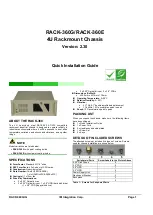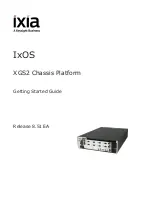
1-9
Cisco ASA Series CLI Configuration Guide
Chapter 1 Routing Overview
Information About the Routing Table
Dynamic Routing and Failover
Because static routing systems cannot react to network changes, they generally are considered unsuitable
for large, constantly changing networks. Most of the dominant routing algorithms are dynamic routing
algorithms, which adjust to changing network circumstances by analyzing incoming routing update
messages. If the message indicates that a network change has occurred, the routing software recalculates
routes and sends out new routing update messages. These messages permeate the network, stimulating
routers to rerun their algorithms and change their routing tables accordingly.
Dynamic routing algorithms can be supplemented with static routes where appropriate. A router of last
resort (a router to which all unroutable packets are sent), for example, can be designated to act as a
repository for all unroutable packets, ensuring that all messages are at least handled in some way.
Dynamic routes are synchronized on the standby unit when the routing table changes on the active unit,
which means that all additions, deletions, or changes on the active unit are immediately propagated to
the standby unit. If the standby unit becomes active after the primary unit has been active for a period of
time, routes become synchronized as a part of the failover bulk synchronization process, so the routing
table on the active/standby failover pair should appear the same.
For more information about static routes and how to configure them, see the
Default Routes” section on page 1-2
.
Dynamic Routing and Clustering
Dynamic routing is fully integrated in a cluster, and routes are shared across units (up to eight units are
allowed in a cluster). Routing table entries are also replicated across units in a cluster.
When one unit transitions from the slave to the master, the epoch number (32-bit sequence number) for
the RIB table is incremented. After the transition, the new master unit initially has RIB table entries that
are the mirror image of the previous master unit. In addition, the reconvergence timer starts on the new
master unit. When the epoch number for the RIB table is incremented, all existing entries are considered
stale. Forwarding of IP packets continues as normal. On the new master unit, dynamic routing protocols
start to either update existing route entries or create new route entries with the new epoch number. These
modified or new entries with the current epoch number indicate that they have been refreshed and are
synchronized to all slave units. After the reconvergence timer has expired, old entries from the RIB table
are removed. RIB table entries for OSPF routes, RIP routes, and EIGRP routes are synchronized to the
slave units.
Bulk synchronization occurs only when a unit joins a cluster and is from the master unit to a joining unit.
For dynamic routing updates, when the master unit learns a new route through OSPF, RIP or EIGRP, the
master unit sends those updates to all slave units through reliable message transmission. Slave units
update their RIB tables after they receive a cluster route update message.
For the supported dynamic routing protocols (OSPF, RIP, and EIGRP), routing packets from layer 2 load
balancing interfaces on the slave units are forwarded to the master unit. Only the master unit sees and
processes dynamic routing protocol packets. When the slave unit requests a bulk synchronization, all
routing entries learned through layer 2 load balancing interfaces are replicated.
When new routing entries are learned through layer 2 load balancing interfaces on the master unit, the
new entries are broadcast to all slave units. When existing routing entries are modified because of a
network topology change, the modified entries are also synchronized to all slave units. When existing
routing entries are removed because of a network topology change, the removed entries are also
synchronized to all slave units.
Summary of Contents for 5505 - ASA Firewall Edition Bundle
Page 28: ...Glossary GL 24 Cisco ASA Series CLI Configuration Guide ...
Page 61: ...P A R T 1 Getting Started with the ASA ...
Page 62: ......
Page 219: ...P A R T 2 Configuring High Availability and Scalability ...
Page 220: ......
Page 403: ...P A R T 2 Configuring Interfaces ...
Page 404: ......
Page 499: ...P A R T 2 Configuring Basic Settings ...
Page 500: ......
Page 533: ...P A R T 2 Configuring Objects and Access Lists ...
Page 534: ......
Page 601: ...P A R T 2 Configuring IP Routing ...
Page 602: ......
Page 745: ...P A R T 2 Configuring Network Address Translation ...
Page 746: ......
Page 845: ...P A R T 2 Configuring AAA Servers and the Local Database ...
Page 846: ......
Page 981: ...P A R T 2 Configuring Access Control ...
Page 982: ......
Page 1061: ...P A R T 2 Configuring Service Policies Using the Modular Policy Framework ...
Page 1062: ......
Page 1093: ...P A R T 2 Configuring Application Inspection ...
Page 1094: ......
Page 1191: ...P A R T 2 Configuring Unified Communications ...
Page 1192: ......
Page 1333: ...P A R T 2 Configuring Connection Settings and QoS ...
Page 1334: ......
Page 1379: ...P A R T 2 Configuring Advanced Network Protection ...
Page 1380: ......
Page 1475: ...P A R T 2 Configuring Modules ...
Page 1476: ......
Page 1549: ...P A R T 2 Configuring VPN ...
Page 1550: ......
Page 1965: ...P A R T 2 Configuring Logging SNMP and Smart Call Home ...
Page 1966: ......
Page 2059: ...P A R T 2 System Administration ...
Page 2060: ......
Page 2098: ...1 8 Cisco ASA Series CLI Configuration Guide Chapter 1 Troubleshooting Viewing the Coredump ...
Page 2099: ...P A R T 2 Reference ...
Page 2100: ......







































